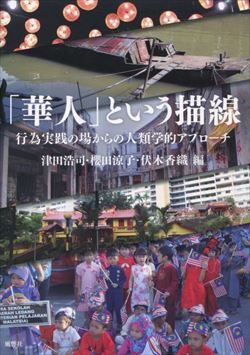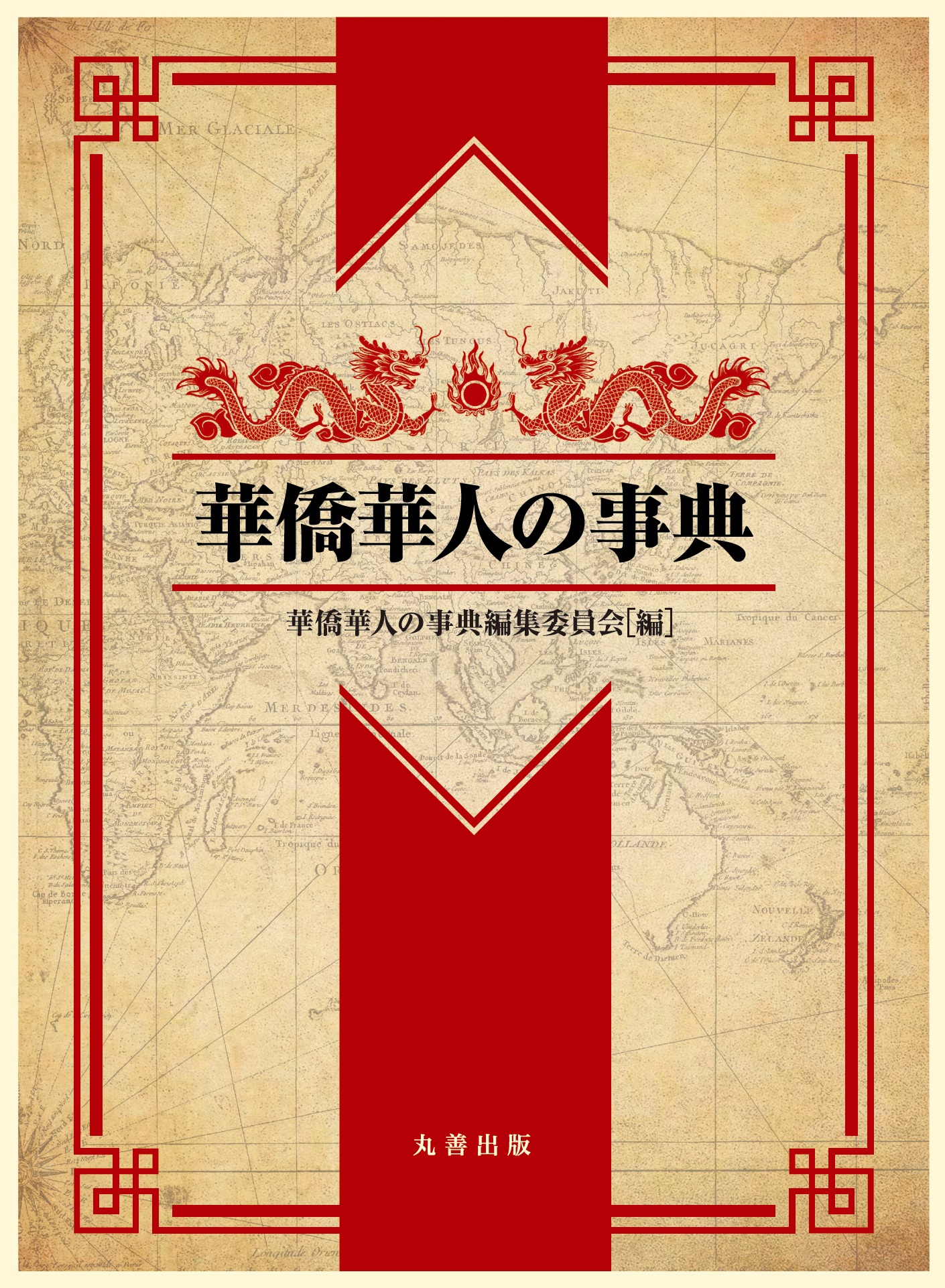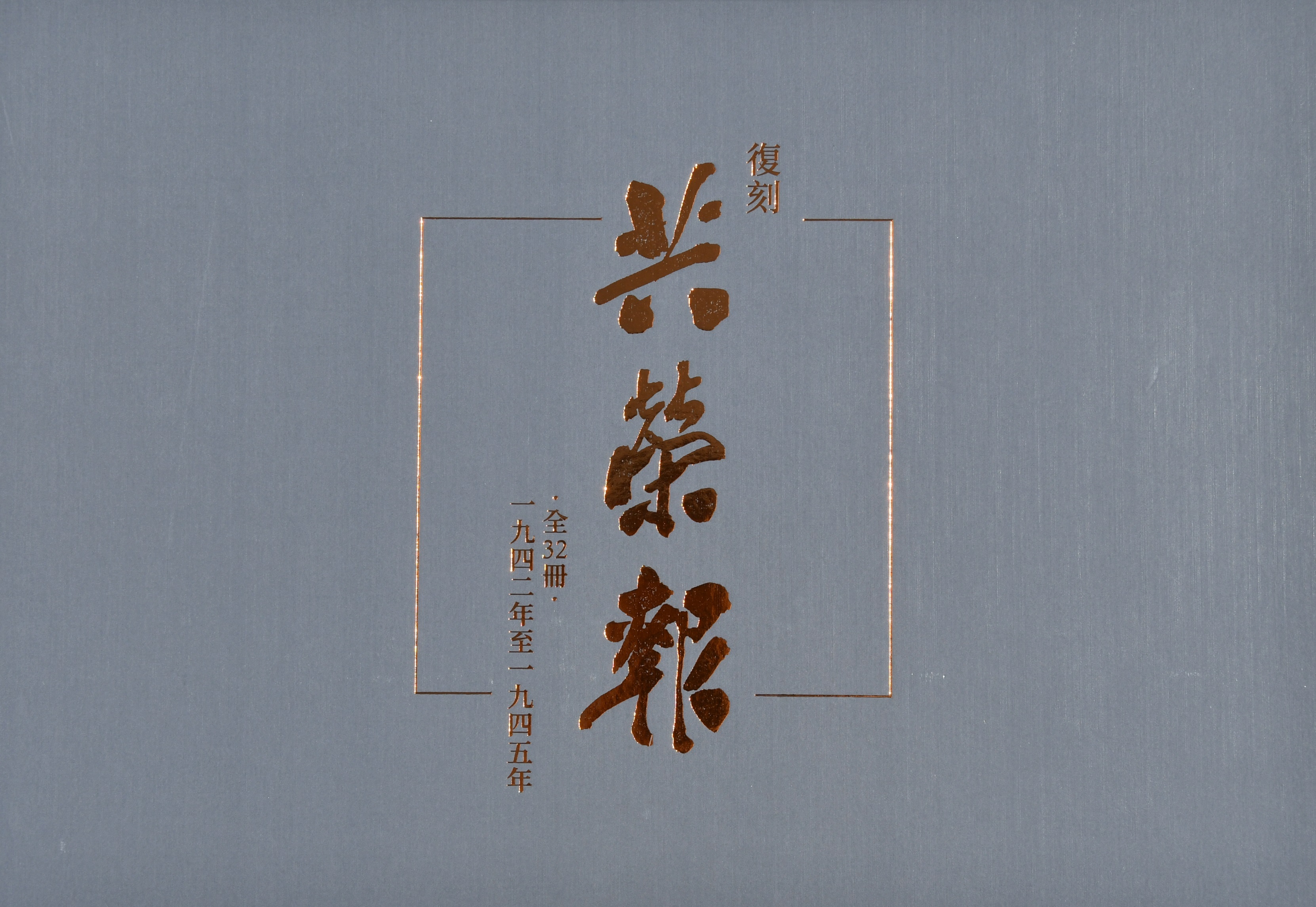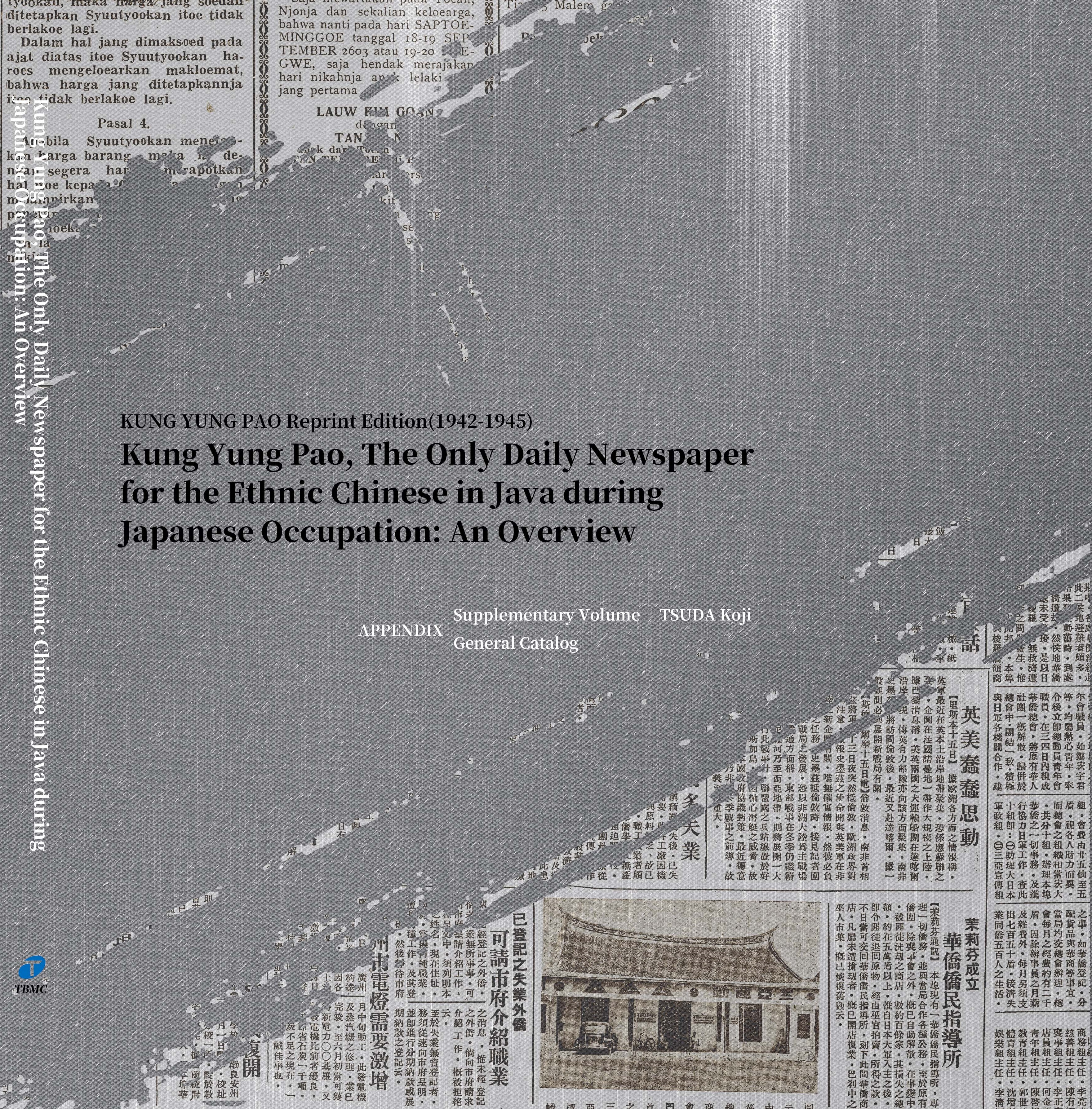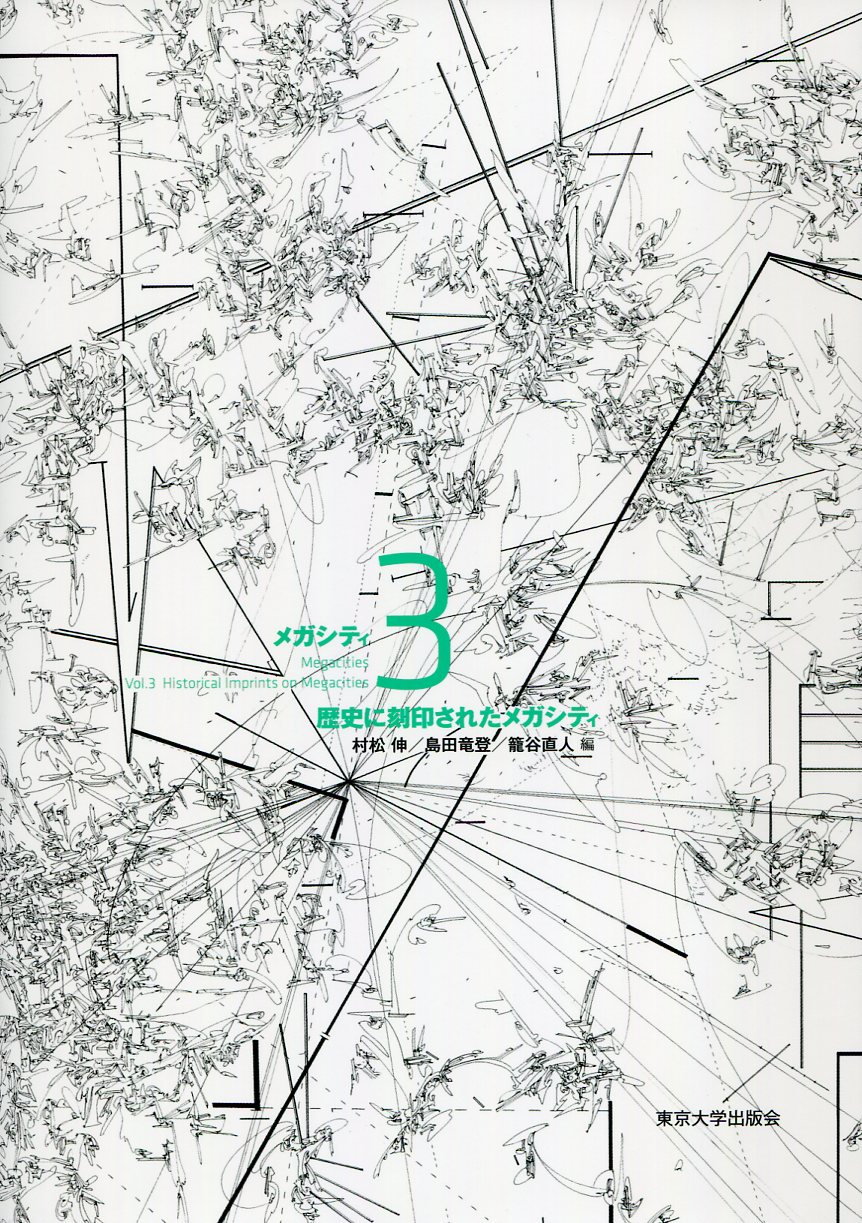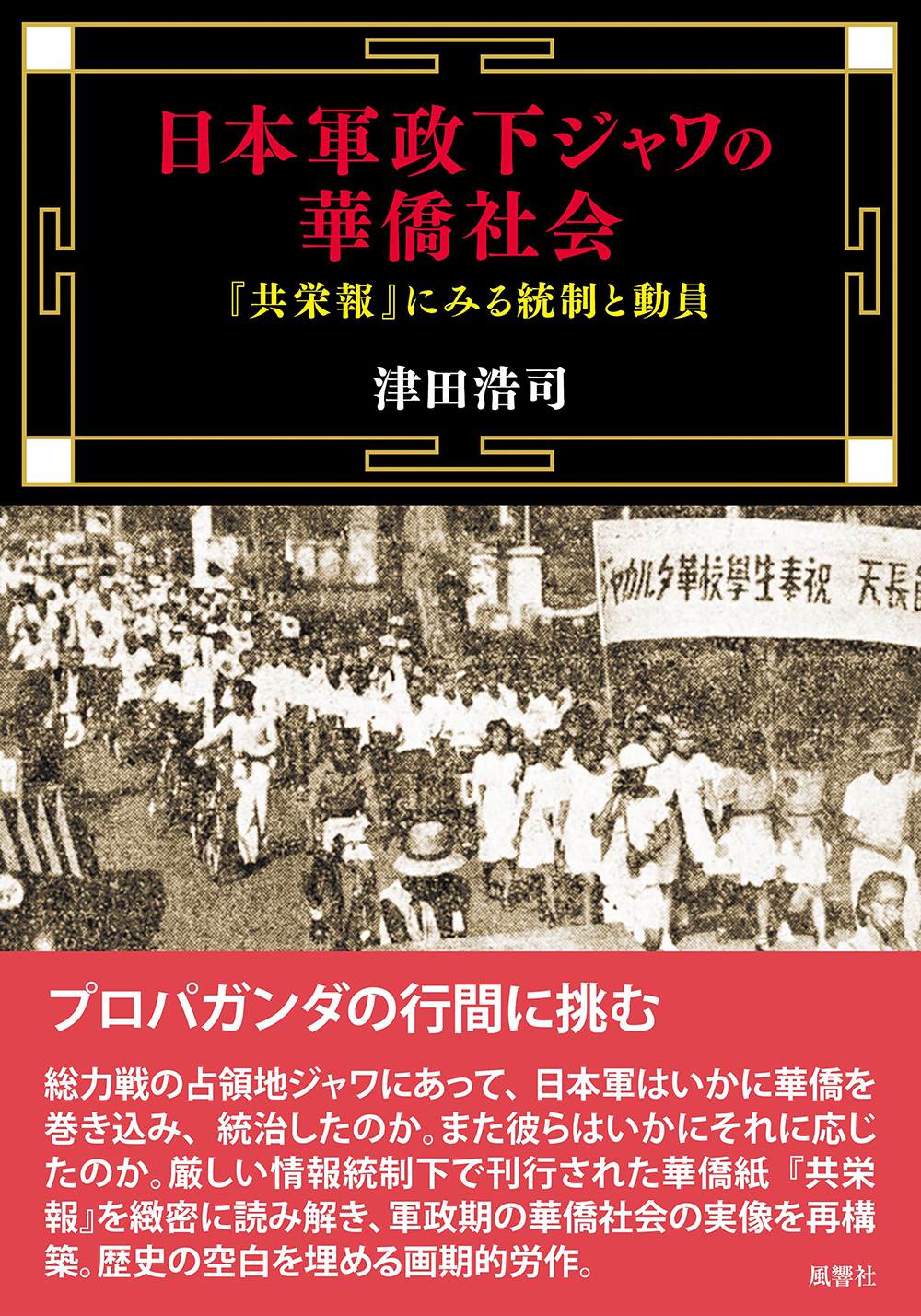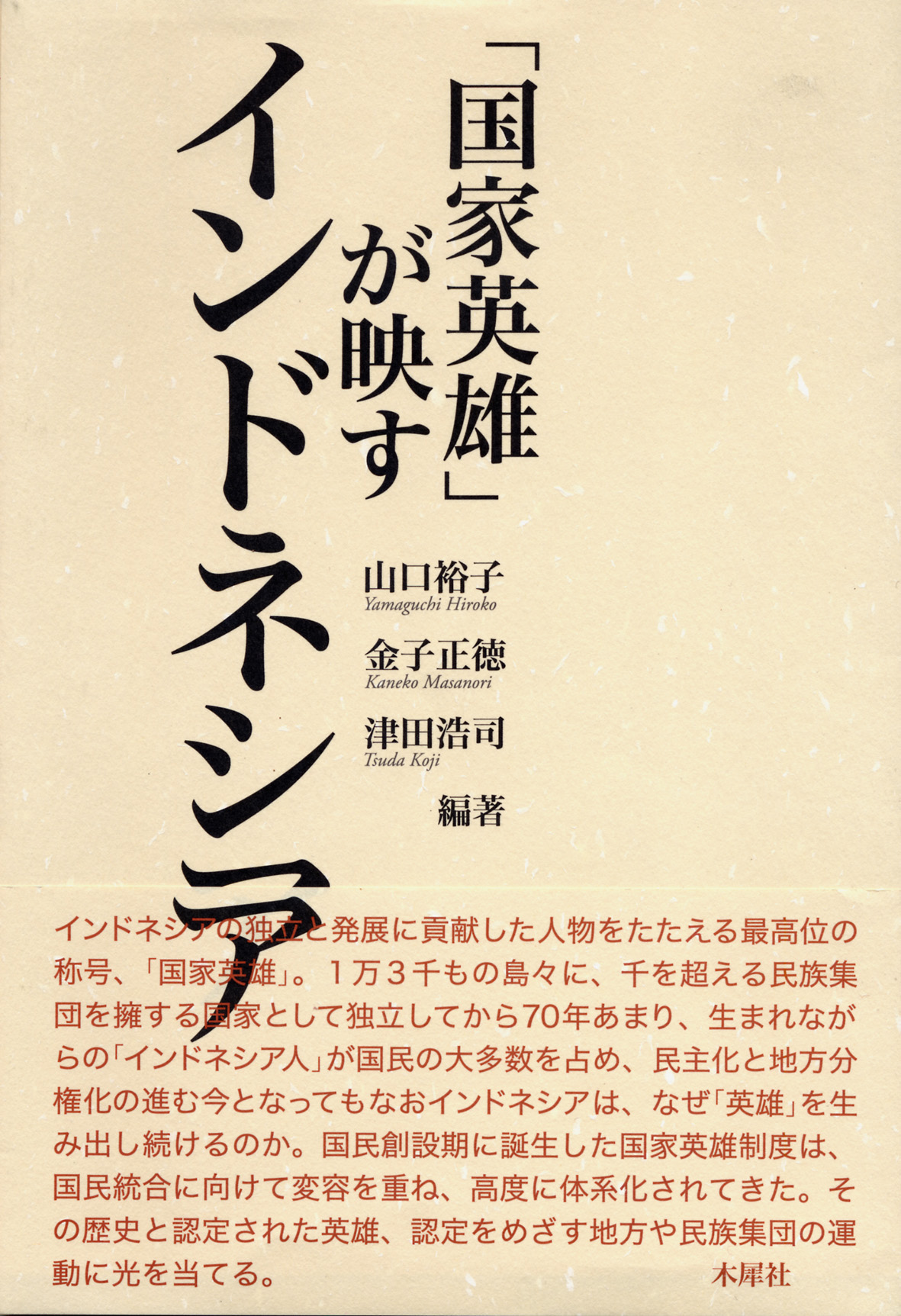
Title
Kokka Eiyu ga Utsusu Indonesia (Nation and Heroes: The Dynamism of Modern Indonesian Society)
Size
333 pages, A5 format
Language
Japanese
Released
March 31, 2017
ISBN
978-4-89618-066-4
Published by
Mokuseisha
Book Info
See Book Availability at Library
Japanese Page
Most countries have someone called their “founding father/mother.” In the case of Japan, opinions about this figure will differ depending on where one locates the starting point of the establishment of Japan as a state that has continued down to the present day, and its founder(s) may be considered to be Emperor Jinmu, the elder statesmen of the Meiji Restoration, or advocates of postwar democracy. If one were to further extend the candidates to people regarded as heroic by society and contrast, for example, the war heroes of World War II with postwar recipients of the People’s Honor Award, one would be able to gain a grasp of changes in the character and values of Japanese society. In this manner, thinking about “heroes” brings to light the nature of surrounding society and an image of that society itself.
This book deals with the heroes of Indonesia, an important country in Southeast Asia made up of countless islands and many different ethnic groups. These are, moreover, no ordinary heroes, but those called “national heroes” (pahlawan nasional), that is, people who have been publicly honoured by a system whereby the state officially recognizes people who have rendered extraordinary service to the state and people of Indonesia. The aim of this book is to focus on these “national heroes” and examine the social dynamism that seeks to elevate them to the position of heroes.
Indonesia declared independence in August 1945 and eventually won its independence after more than four years of guerilla warfare and diplomatic warfare with the Netherlands, which had plans to recolonize Indonesia. The above system of “national heroes” was subsequently instituted in the late 1950s, and since then more than 160 (!) people have been awarded this highest-level title, with their number continuing to rise year by year.
The most typical image of a “national hero” is that of a deceased politician or soldier who played a leading role in the nationalist movement that led to the declaration of independence and in the war of independence before and after Japanese military rule. This basic image of the hero remains unchanged today, but reflecting changes in Indonesia’s society and politics during more than half a century, the image of those nominated for the title of “national hero” has undergone some changes.
Further, as democratization and decentralization have advanced in Indonesia since the late 1990s, various regions and ethnic groups (including some that had hitherto been marginalized within the state framework), and also political elites who have been emerging at a local level, have all been busy uncovering past figures representative of “themselves” and have begun to launch movements to have these figures added to the lineup of “national heroes.”
What sort of self-portrait has Indonesia been delineating through this system of “national heroes”? And what are the implications of the fact that even today, when Indonesia is quite stable and mature and can no longer be described as an emergent nation, nation-building heroes still continue to be sought? In particular, what sort of changes and conflicts within Indonesian society are reflected in the movements in which various regions, ethnicities, and other groups with vested interests are currently actively engaged in order to symbolically represent “themselves”? And what possibilities and constraints arise as a consequence of their claims being presented through the system of “national heroes”?
In this book, researchers who have conducted field studies in different parts of Indonesia from the vantage points of cultural anthropology, area studies, history, and so on paint a vivid picture of the dynamism of society in present-day Indonesia by carefully describing various aspects of the hero-endorsement movements that are welling up in different regions, and they also shed light on the values and history of which people, through their heroes, seek to present “themselves” as the bearers.
(Written by TSUDA Koji, Associate Professor, Graduate School of Arts and Sciences / 2018)



 Find a book
Find a book


